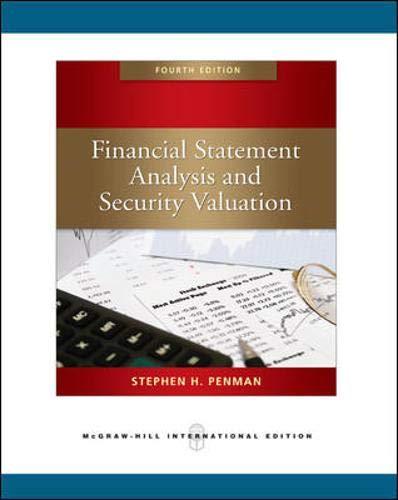The so-called Internet Bubble gripped stock markets in 1998, 1999, and 2000, as discussed in the chapter.
Question:
The so-called Internet Bubble gripped stock markets in 1998, 1999, and 2000, as discussed in the chapter. Internet stocks traded at multiples of earnings and sales rarely seen in stock mar kets. Start-ups, some with not much more than an idea, launched initial public offerings (IPOs) that sold for very high prices (and made their founders and employees with stock options very rich). Established firms, like Disney, considered launching spinoffs with "dot.com" in their names, just to receive the higher multiple that the market was giving to similar firms. Commentators argued over whether the high valuations were justified. Many concluded the phenomenon was just speculative mania. They maintained that the potential profits that others were forecasting would be competed away by the low barriers to entry. But others maintained that the ability to establish and protect recognized brand names-like AOL, Netscape, Amazon, Yahool, and eBay--would support high profits. And, they argued, con- sumers would migrate to these sites from more conventional forms of commerce. America Online (AOL) was a particular focus in the discussion. One of the most well- established Internet portals, AOL was actually reporting profits, in contrast to many Internet firms that were reporting losses. AOL operated two worldwide Internet services, America Online and CompuServe. It sold advertising and e-commerce services on the Web and, with its acquisition of Netscape, had enhanced its internet technology services. See Box 1.3. For the fiscal year ending June 30, 1999, America Online reported total revenue of $4.78 billion, of which $3.32 billion was from the subscriptions of 19.6 million AOL and CompuServe subscribers, $1.00 billion from advertising and e-commerce, and the remain- der from network services through its Netscape Enterprises Group. It also reported net income of $762 million, or $0.73 per share. AOL traded at $105 per share on this report and, with 1.10 billion shares outstanding, a market capitalization of its equity of $115.50 billion. The multiple of revenues of 24.2 was similar to the multiple of earnings for more seasoned firms at the time, so relatively, it was very high. AOLS P/E ratio was 144. In an article on the op-ed page of The Wall Street Journal on April 26, 1999, David D. Alger of Fred Alger Management, a New York-based investment firm, argued that AOL's stock price was justified. He made the following revenue forecasts for 2004, five years later (in billions): Subscriptions from 39 million subscribers Advertising and other revenues Total revenue Profits margin on sales, after tax $12.500 3.500 16.000 26% To answer parts (A) and (8), forecast earnings for 2004. A. IfAOL's forecasted price-earnings (P/E) ratio for 2004 was at the current level of that for a seasoned firm, 24, what would AOL's shares be worth in 1999? AOL is not expected to pay dividends. Hint: The current price should be the present value of the price expected in the future. B. Alger made his case by insisting that AOL could maintain a high P/E ratio of about 50 in 2004. What P/E ratio would be necessary in 2004 to justify a per-share price of $105 in 1999? If the P/E were to be 50 in 2004, would AOL be a good buy? C. What is missing from these evaluations? Do you see a problem with Alger's analysis?
Step by Step Answer:

Financial Statement Analysis And Security Valuation
ISBN: 9780071267809
4th International Edition
Authors: Penman-Stephen-H, Steven Penman





